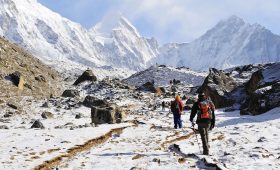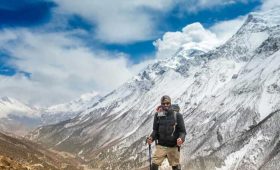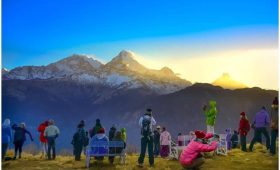Nepal, a land of majestic peaks and breathtaking landscapes, has a long and fascinating history when it comes to trekking. From its humble beginnings in the early 1900s to becoming a world-renowned trekking destination, Nepal has captivated the hearts of adventurers from around the globe. In this article, we will delve into the rich history and intriguing facts surrounding trekking in Nepal.
The history of trekking in Nepal can be traced back to the early 1900s when the country was first opened up to foreign visitors. It was during this time that explorers and mountaineers began venturing into the Himalayan region, lured by the allure of conquering some of the tallest peaks in the world. These early adventurers paved the way for what would later become a thriving trekking industry.
One of the key figures in the early history of trekking in Nepal was Bill Tilman, a British adventurer. In 1949, Tilman managed to obtain permission from the King of Nepal to embark on a trekking expedition. This marked the beginning of Nepal’s career as a trekker’s paradise, as more and more people started to explore the stunning landscapes and hidden valleys of the Himalayas.
However, it wasn’t until the 1960s that organized trekking truly took off in Nepal. Colonel Jimmy Roberts, a highly decorated British Army officer, is credited with introducing the concept of organized trekking to the country. In 1965, Roberts led the first commercial trekking group, marking a significant milestone in the history of trekking in Nepal. Since then, trekking has become an integral part of Nepal’s tourism industry.
Today, Nepal offers a wide range of trekking routes that cater to various interests and fitness levels. The Everest Base Camp Trek, one of the most iconic trekking routes in the world, takes trekkers through the stunning Khumbu Valley, offering awe-inspiring views of towering peaks like Mount Everest, Lhotse, and Nuptse. The Annapurna Circuit Trek, on the other hand, takes trekkers on a journey around the Annapurna massif, showcasing diverse landscapes, charming villages, and lush forests. These are just a few examples of the countless trekking routes that Nepal has to offer.
One of the fascinating facts about trekking in Nepal is the meaning behind the word “Himalaya,” which is derived from Sanskrit and translates to “the home or abode of snow.” This perfectly encapsulates the awe-inspiring snowy peaks that trekkers encounter along their journey. The Himalayas, with its snow-capped peaks, hidden valleys, and remote mountain villages, provide an unparalleled setting for adventure and exploration.
Apart from its natural beauty, Nepal is also known for its rich cultural heritage. Many trekking routes pass through traditional villages inhabited by various ethnic groups, each with their own distinct traditions and customs. This offers trekkers a unique opportunity to immerse themselves in the local culture, interact with friendly locals, and witness ancient traditions firsthand. From prayer flags fluttering in the wind to ornate monasteries perched on hilltops, the cultural aspects of trekking in Nepal add a whole new dimension to the experience.
Trekking in Nepal is not just about the breathtaking landscapes and cultural immersion; it also provides a chance to challenge oneself physically and mentally. The rugged terrain, high altitudes, and variable weather conditions make trekking in Nepal a demanding endeavor. However, with proper preparation, training, and expert guidance, trekkers can conquer their own personal mountains and achieve a sense of accomplishment like no other.
As Nepal continues to attract adventurers from all corners of the globe, it is crucial to ensure sustainable and responsible trekking practices. Conservation efforts, responsible waste management, and respect for local communities are vital in preserving the natural and cultural treasures that make Nepal such a remarkable destination. By treading lightly and being mindful of our impact, we can contribute to the preservation of this awe-inspiring land for future generations of trekkers to enjoy.




